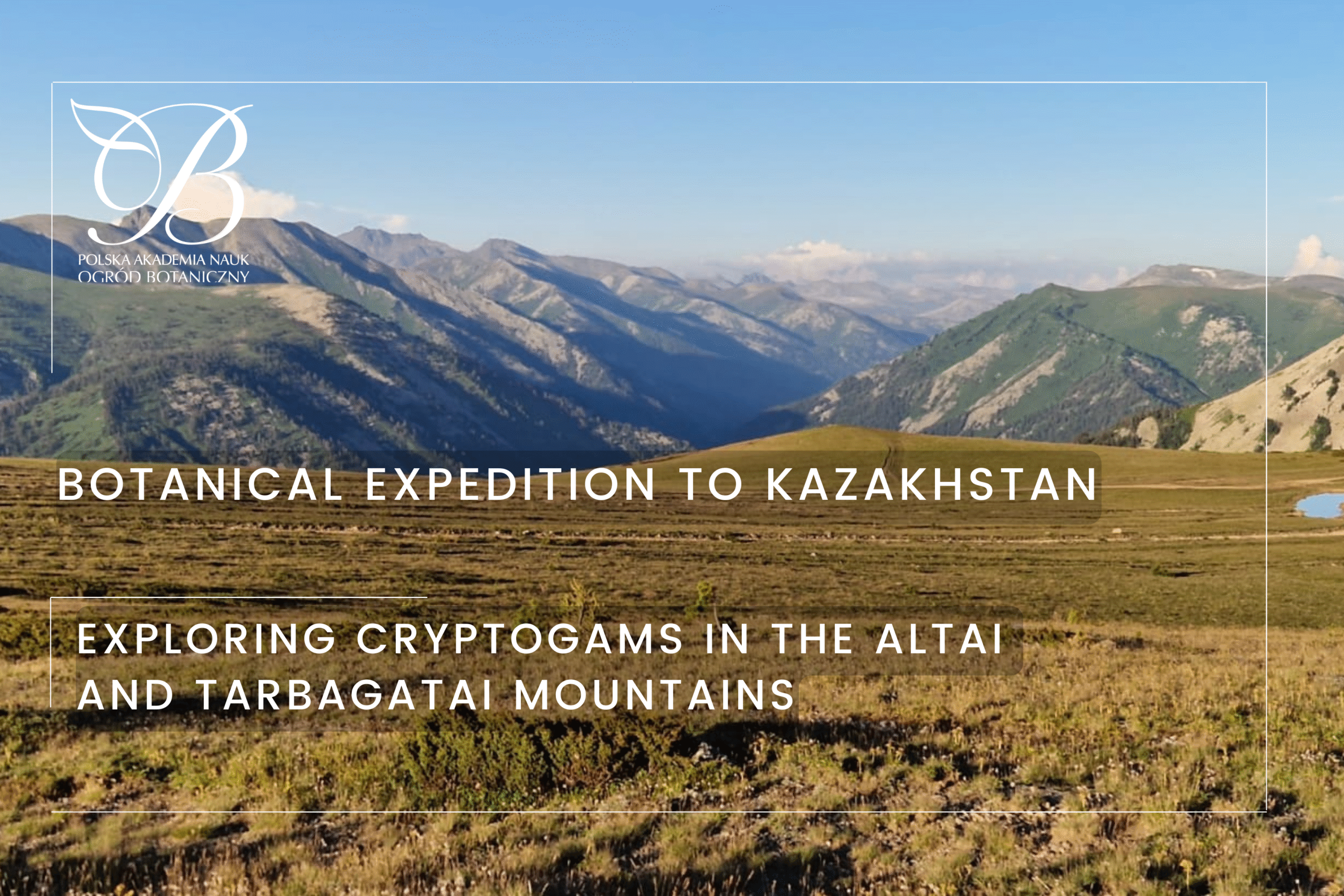Botanical expedition to Kazakhstan - study of spore-bearing plant communities in the Altai and Tarbagatai mountains
Over the summer, a research team from the Botanical Garden of the Polish Academy of Sciences in Powsin traveled to Kazakhstan - a country known for its vast steppes and semi-desert landscapes. However, during our expedition we focused on another, much lesser-known side of this country - vast mountain ranges, picturesque river valleys and surprisingly diverse rocky habitats. Since the rocky habitats in Central Asia are characterized by the greatest plant endemism, our research focused primarily on the bryophyte vegetation that develops directly on rocks (epilithic) - especially that built by spore-bearing plants such as mosses and lichens - as well as the vascular plant communities that inhabit the diverse rocky habitats. Having studied the vascular vegetation of Central Asia and published a summary monograph, we are now focusing on identifying the diversity of bryophyte and lichen communities, especially chasmophytic (epidermal) ones. These are our tasks for the next three years. This topic is extremely important from the point of view of protecting the diversity of cryptogamic plants in the global center of biodiversity, which is the "Mountains of Central Asia."
Altai Mountains - the center of our research
We spent most of our time in the Altai Mountains, located in the northeastern part of Kazakhstan, near the borders with China and Russia. The Altai ranges are not only rugged natural terrain, but especially rich and varied vegetation, which made every day of work very useful.
During the expedition, we collected 287 samples of cryptogamic vegetation built by bryophytes and lichens, in the form of 287 phytosociological photos documenting plant communities on rock outcrops. The most common types of bryophytes were Grimmia, Tortula, Hedwigia i Syntrichia. The full list of species and their percentages will be determined after more detailed laboratory analysis with species identification and rock samples.
Although the Altai region remained our main area of interest, we also managed to reach the main ridge of the Tarbagatai limestone mountains, where we conducted additional research. This lesser-known but floristically intriguing mountain range provided additional value to our comparative study of the rocky habitats of Central Asia.
The time spent in the field gave us the opportunity to appreciate Kazakhstan's unusual and often unexpected landscapes. In addition to the mountains, we were particularly struck by the beauty of the Irtysh River valley, a vast and impressive natural corridor . Observing the changing vegetation and geological formations was both scientifically valuable and personally inspiring.
Field work in Kazakhstan also involved logistical challenges. One day we drove more than 500 kilometers without encountering a single gas station. Such experiences demonstrate the scale of this country and the importance of careful route planning.
The Kazakhs we met were invariably polite and hospitable. However, they were not always able to help us find our way - which surprised us more than once. One example was trying to reach a national park near the capital, Astana. Despite the fact that it is near the city, almost no one we asked had heard of it, and finding the entrance proved almost impossible.
Contribution to the knowledge of the vegetation of Central Asia
We hope that our expedition to the rocky habitats of Kazakhstan will make a significant contribution to the understanding of the diversity and chorology of the bryophyte flora of Central Asia. The collected material and detailed documentation of plant communities will form the basis for further ecological and taxonomic studies of spore-bearing plants in mountain environments.


